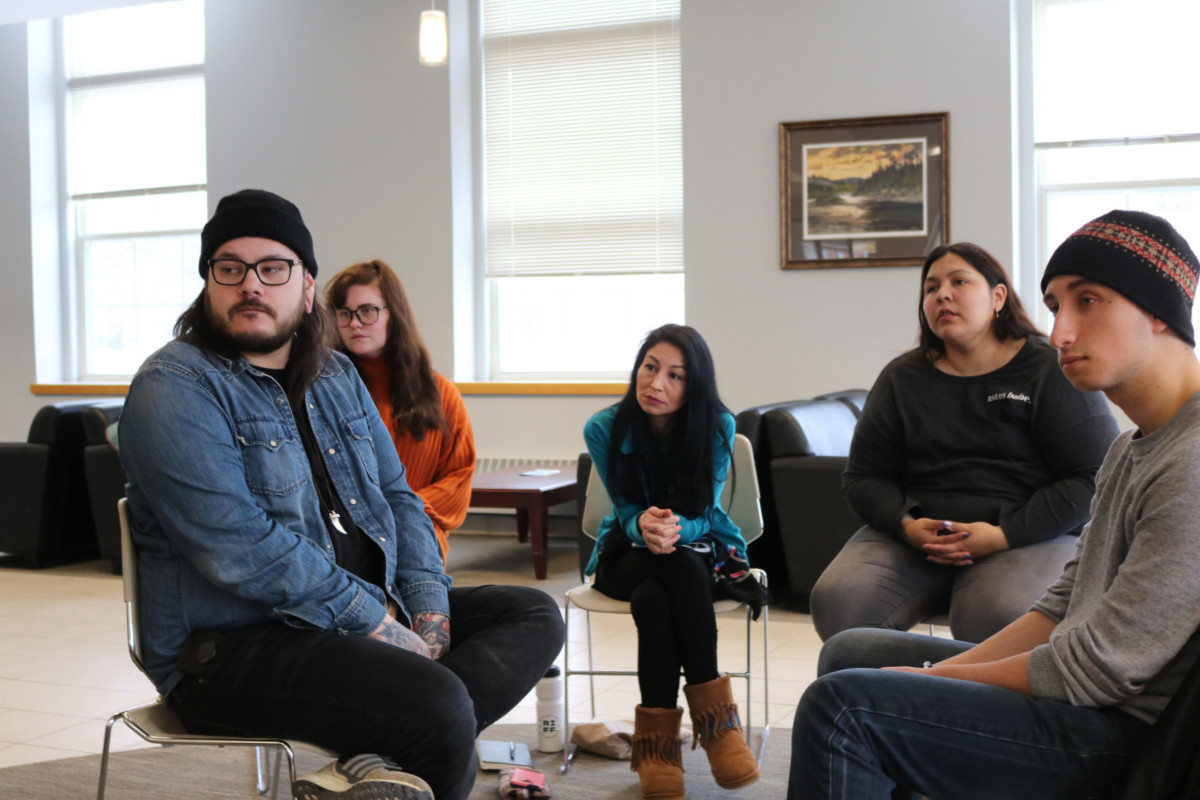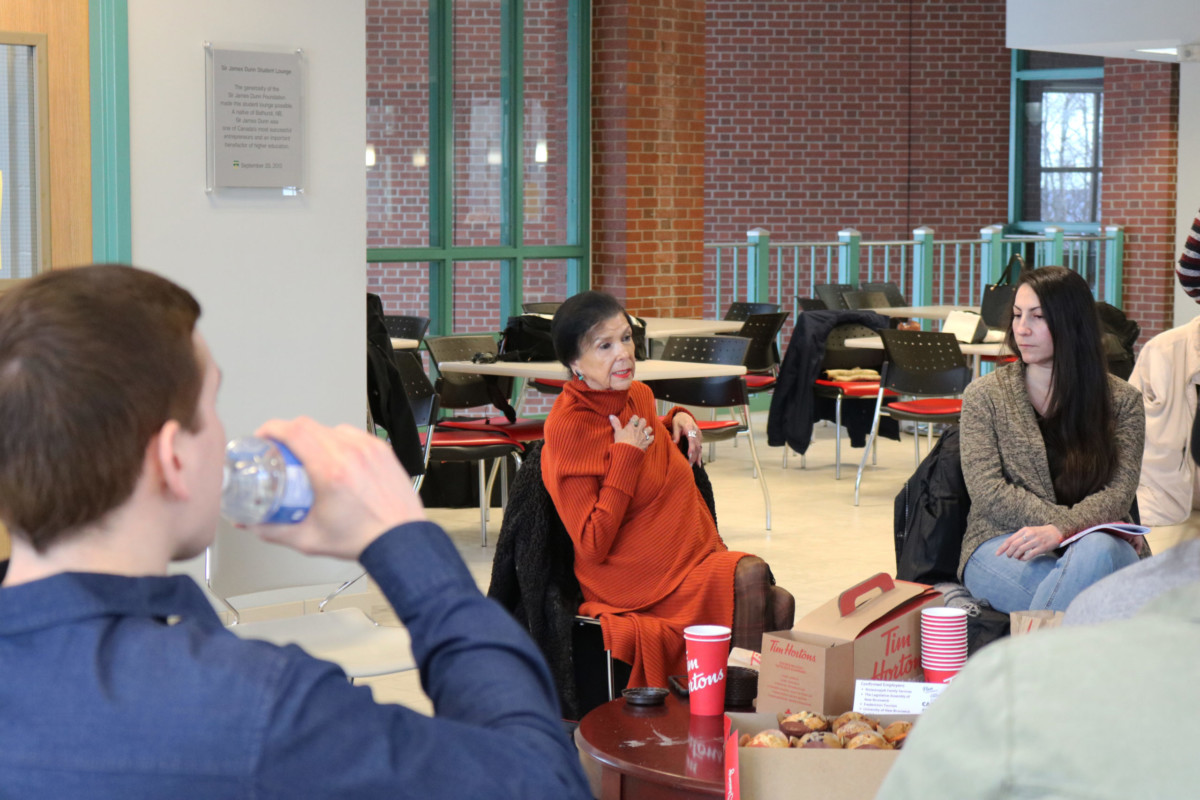

A few weeks ago at a filmmaking workshop for students in St. Thomas University’s James Dunn Hall, I was the interviewer and CBC reporter and STU grad Logan Perley was the subject. Filmmaker Alanis Obomsawin sits beside us, leaning forward and hanging onto every word.
“Find the heart of the story. This is something you can return to,” she said.
The filmmaking workshop was part of STU’s first Indigenous Film Festival that took place from Jan. 30 to Feb. 1. Obomsawin is one of the most acclaimed Indigenous directors in the world, according to the National Film Board of Canada.
Obomsawin’s film Jordan River Anderson: The Messenger was screened during the festival.
The other nine group members sat in silence, stunned at Perley’s touching ruminations about his relationship with his father and the impact his community had on him. She wanted me to hone in on Perley’s personal life because that’s where the story comes from, those small moments where people reveal themselves to the camera.
Obomsawin hosted the two-day film workshop as an extension of the film festival. I was there, and the other filmmakers and I listened to her impart her wisdom.
“All young people want to make movies. If I were to die today, it would be okay because I know we have you.”
Her belief in the power of film is invigorating.

“I’m so glad that I’ve lived long enough to see how things have changed,” she said.
“The time for you is now.”
The workshop was an opportunity for Obomsawin to teach the next generation of Indigenous filmmakers the essentials of story and film equipment.
The technical skills
During these two days, I learned Obomsawin’s empathy seeps through every story, revealing her unwavering dedication to both the craft and the people.
“I will sometimes return several times [to the person] if I need clarification or if I want to know more,” she said.
“I don’t bring the crew with me, I go alone the first time.”
Before Obomsawin films a documentary, she goes alone with an audio recorder for the
first interview.
“Be natural, [and] just have a conversation. Talk to each other,” said Obomsawin.
Out of respect, it’s best not to have a camera for the first couple times you go and talk with the person, she said.
Obomsawin said she usually goes back with an audio recorder two to three times before bringing a camera and a crew.
She said that if the people you interview have any old photographs, ask to see them and
get them to explain who is in the photograph, where it was taken and when it was taken.
“The greatest thing is time,” said Obomsawin.
She doesn’t rush an interview for a documentary. She listens and tries to get to what
story is the most important.


Obomsawin said that a crew should be formed of a producer who applies for grants and finds
the crew, a director who knows what the story is, a camera person, an assistant camera person and a sound person.
“We talked about image yesterday, but sound is very important. Almost more important,” she said.
“A guy brought me a digital camera in a wheelbarrow and I filmed with that,” she said, recounting her experiences where she was appalled by the sound quality.
“Technology has advanced since then.”
She talked about the equipment she had used in short films and what kind of equipment she prefers to use.
“I was always worrying about film stock,” she said.
“It costs thousands of dollars more and I’m more comfortable with video cameras now.”
Her deep understanding of the medium has allowed her to grow with the industry even as she turns 88 next year.
Filmmaking for the future
Her candidness about being Indigenous and a woman in a male-dominated field provided the group with much-needed motivation.
“I could tell when it was because I was Indigenous,” she said,
Obomsawin’s struggle early in her career proved useful for other group members as funding is always a struggle for filmmakers.
“I love your stubbornness. You always kept going,” one girl said.
This sparked conversation in the group about different resources available to young Indigenous filmmakers such as the NB Film Co-op and the National Film Board of Canada.
She placed emphasis on this on the night of the premiere and it was a feeling that permeated through the workshop.
“I make movies for the world. There is an Indigenous audience,” she said.
Her undying passion for the medium as a means of creating change is embodied both in her character and in her work. She’s a must-see for Canadians.
“There’s a lot of good people, we just pay too much attention to the bad ones.”
With files from Alex Dascalu
